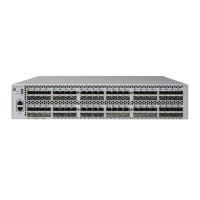168 • SSHCOM Command Reference HP NonStop SSH Reference Manual
ASSUME USER
The KEY, KNOWNHOST and PASSWORD entities are associated with a single Guardian system user. In the case of
the KNOWNHOST entity, the reserved user name ALL is also allowed to specify that a KNOWNHOST can be accessed
by all Guardian users.
The ASSUME user command sets a user name as default for the following commands. Subsequent commands that allow
the specification of a user name can therefore be abbreviated. The command has the following syntax:
ASSUME USER [<system-user-name>]
If no user name is specified, the command will display the current value assumed.
Otherwise it will change the value to the user name provided.
The User ALL
The username ALL is reserved to specify all local NonStop system users in conjunction with the KNOWNHOST entity.
If a KNOWNHOST is set to the user ALL, it means that all local system users can access that host. Note that the user
ALL has no special meaning for the KEY or PASSWORD entity.
INFO SYSTEM-USER
KEY, KNOWNHOST and PASSWORD entities are each maintained via a set of CLIENT mode commands like
GENERATE KEY, ALTER KNOWNHOST and FREEZE PASSWORD. The INFO SYSTEM-USER lists all KEY,
KNOWNHOST and PASSWORD records assigned (owned) by a specific local Guardian system user. Both the KEY
and the KNOWNHOST entity are associated with a single Guardian system user. Besides providing an overview of the
system user related client mode records, the INFO SYSTEM-USER lists additionally the remote ssh user names that are
mapped to a specific local system user.
The command has the following syntax:
INFO SYSTEM-USER [<system-user-name> | <partial-system-user-name>* | *]
[,DETAIL]
If no user name is specified, the command will display the entries for the current (or assumed ) system
user.
The wildcard character '*' can be used alone to select all entries or it can be preceded by a name prefix to select all
entries where the system user name starts with the given prefix.
The DETAIL attribute can be specified, if detailed information is needed.
The individual attributes have the following meaning:
<system-user-name>
A valid GUARDIAN user. If <system-user-name> is omitted, then either the user being set with a previously issued
ASSUME USER command or the issuer of the INFO SYSTEM-USER command will be used as the default.
<partial-system-user-name>
A prefix that is used to match system users owning knownhost, password and key entries in the SSHCTL database.
